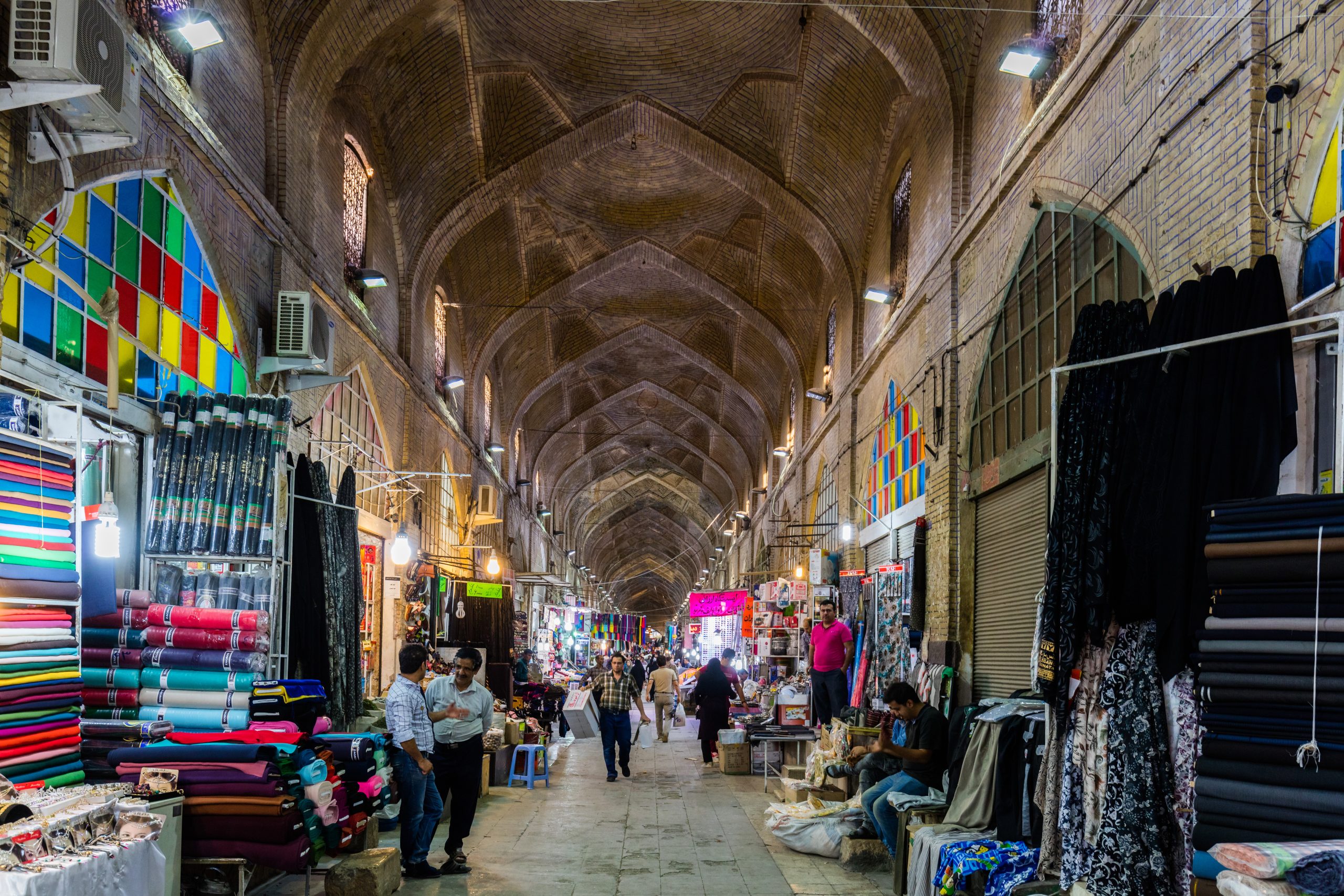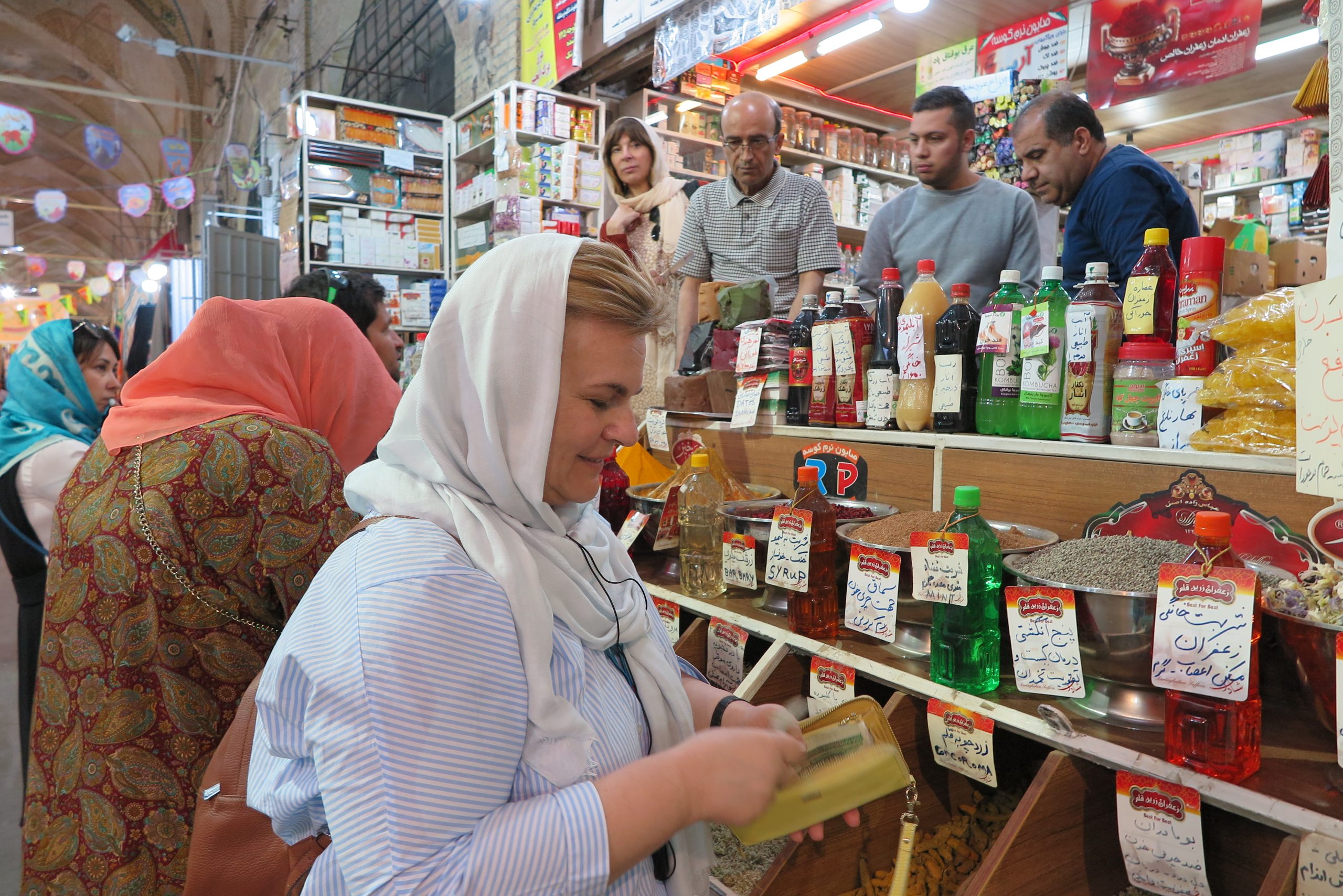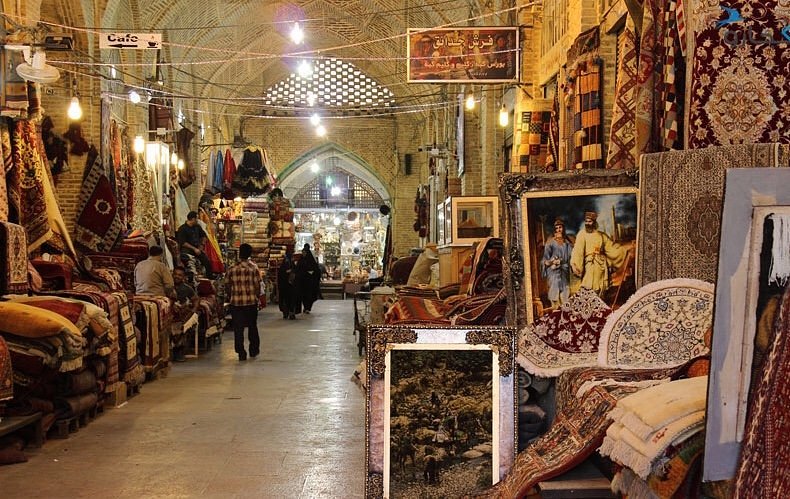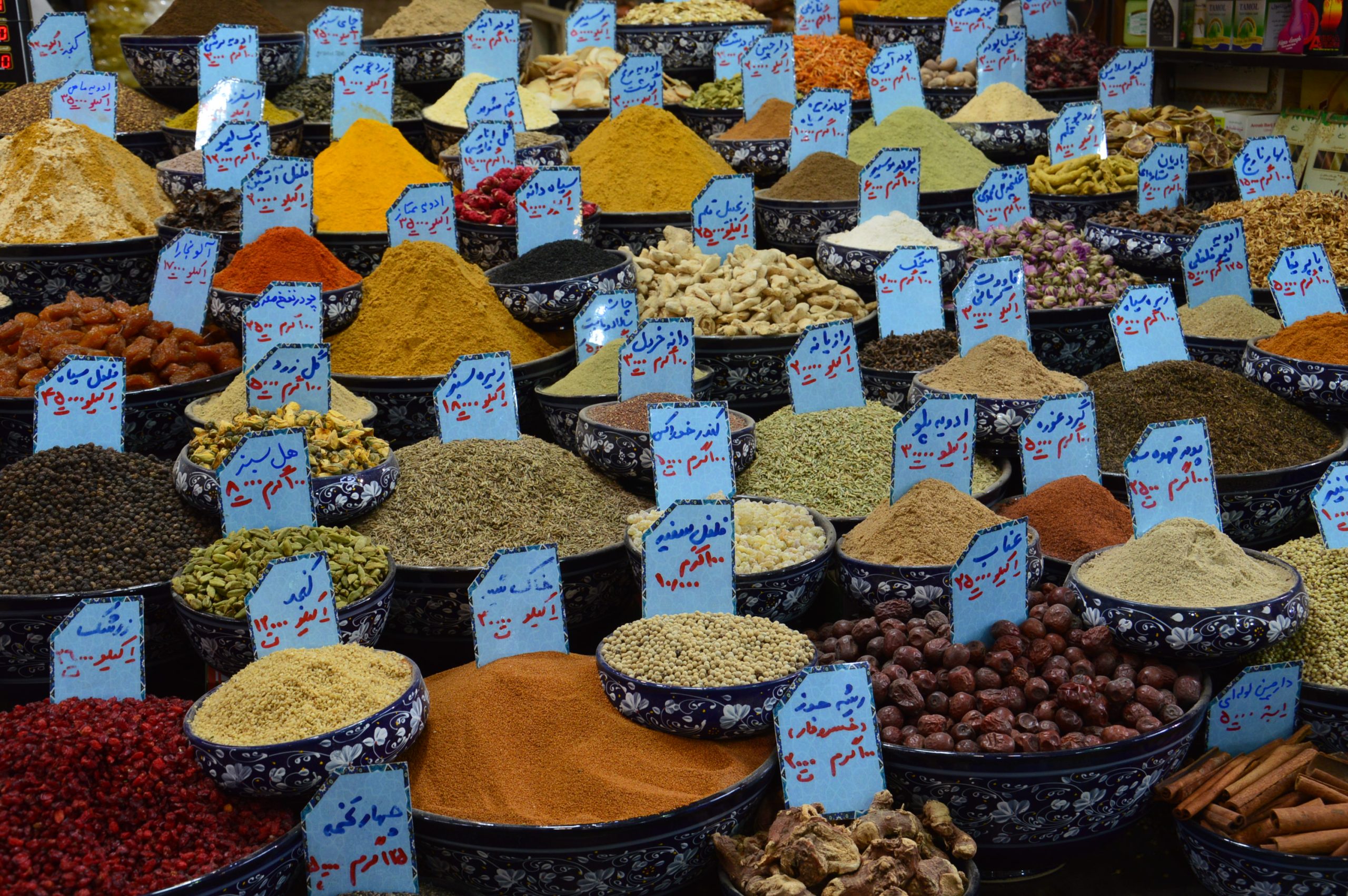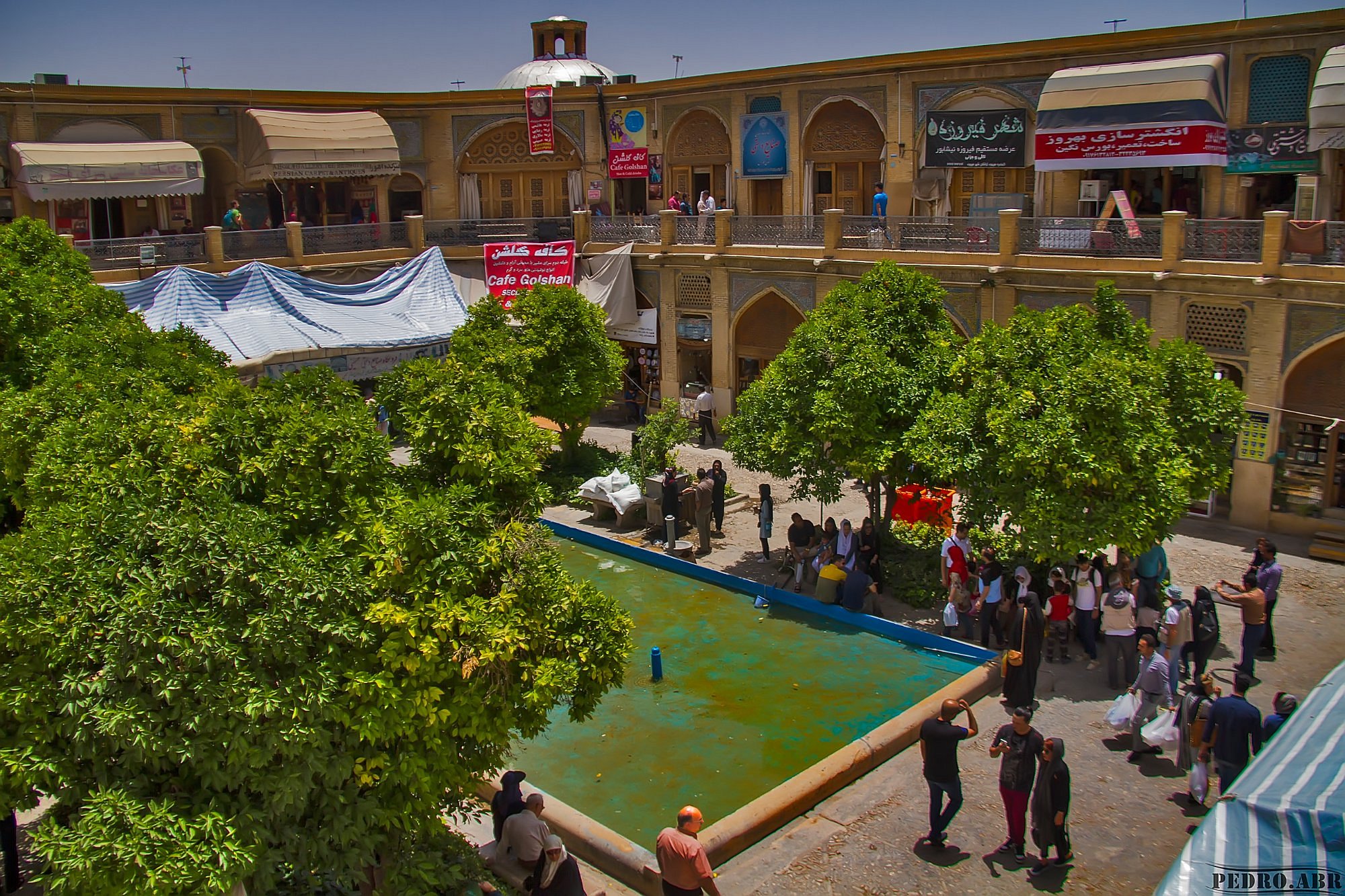Vakil Bazaar is a vibrant testament to Iran’s rich history and culture that is in the heart of Shiraz. This bustling market, with its labyrinthine alleys and domed ceilings, has been a hub of commerce, culture, and community life for centuries and part of the Silk Road. Whether you are a history buff, a lover of architecture, or a curious traveler, the Vakil Bazaar offers an enchanting glimpse into the past and a dynamic snapshot of contemporary Iranian life.
Historical Background
The roots of Vakil Bazaar can be traced back to the 11th century during the reign of the Zand dynasty. The bazaar, as we know it today, conceptualized and built during the reign of Karim Khan Zand, the founder of the Zand dynasty. He envisioned Shiraz as the glorious capital of his kingdom.
The bazaar was part of a larger urban project, which included the Vakil Mosque, Vakil Bathhouse, and Vakil Citadel. Together, these structures aimed to establish Shiraz as a prominent center of trade and culture.

Architectural Marvel
Bazaar Vakil is not merely a marketplace; it’s a living architectural marvel. The architectural brilliance and intricate design of bazaar are reflective of the remarkable craftsmanship of that era.
One of the most striking features of the Vakil Bazaar is its architecture. Designed with a blend of Persian and Islamic styles, the bazaar showcases exquisite artistry and practical design. The vaulted ceilings, adorned with intricate brickwork and delicate tile patterns, not only create a visually stunning environment but also provide natural climate control, keeping the interior cool in the scorching summer heat and warm during the chilly winters.
The layout of the bazaar is a kind of genius. The main corridor stretches approximately one kilometer, branching into numerous smaller alleys, each dedicated to specific types of goods. This organization makes it easy for visitors to navigate and discover the diverse range of products available.
A Shopper’s Paradise
Vakil Bazaar isn’t just a tourist attraction, but a place where locals actually do their shopping. It has a really vibrant and bustling atmosphere. This is a shopper’s paradise, offering a plethora of traditional and modern goods. As you wander through its winding alleys, you will find an array of products, from Persian rugs and spices to exquisite handicrafts and traditional clothing.
Handwoven Carpets: Persian carpets are renowned worldwide for their quality and intricate designs. This bazaar offers a stunning selection, from antique rugs to contemporary pieces.
Spices and Herbs: The halls are filled with the smell of spice which lingers throughout the bazaar. It is an amazing sensory experience; feeling the aromatic scents of saffron, turmeric, and rose petals. It provides a chance to purchase some of the finest spices and herbs.
Jewelry and Handicrafts: The bazaar is a treasure trove of handmade jewelry, pottery, copper handicrafts, Mina Kari, Firoozeh Koubi, and Khatam Kari; showcasing the craftsmanship and creativity of Iranian artisans.
Textiles and Fabrics: From luxurious silks to vibrant cottons, the variety of textiles available caters to all tastes and needs.
Traditional Sweets and Delicacies: No visit to the bazaar is complete without sampling some local sweets like Faloodeh Shirazi, Sohan, Baklava and Gaz.

The Cultural Tapestry
As you meander through the alleys, you’ll find the bazaar to be a living tapestry of Iran’s diverse culture. Interactions with local merchants, artisans, and shoppers provide insights into the daily lives and customs of the Iranian people. The bazaar serves as a microcosm of Iranian society, where stories of the past blend with the realities of the present.
Practical Tips for Visitors
⦁ Don’t miss visiting Saray-e Moshir. It was previously a caravanserai which currently, its rooms used as an exhibition hall for the demonstration of local handicrafts. It is located on the southern side of the bazaar.
⦁ The bazaar is usually open from 9:00 a.m. During spring and summer, it is open until 10:00 p.m. while during autumn and winter, it is open until 7:00 p.m.
⦁ The bazaar is closed on Fridays. It is also closed on special holidays like Tasua, Ashura, 14th & 15th June, 21st Ramadan, 28th Safar and 25th Shawal.
⦁ The Vakil Bazaar has different entrances situated in Zand Street, Taleghani Street, Lotfali Khan Street. The main entrance of the bazaar is located in Zand Street on the east side of Shahrdari Square.
⦁ Vakil Bazaar’s attractions are not limited to shopping, there are also numerous cafes and restaurants around; such as Sharzeh Restaurant, Emarat-e Golbahari, Kateh Mast Restaurant, Saray-e Fil.
⦁ Due to sanctions, using credit cards in Iran is not possible; please make sure to bring cash for your purchases. Also, try bargaining, as it’s a common enjoyable practice in Iran.
⦁ You don’t need to buy an entrance ticket for entering the Vakil Bazaar and Saray-e Moshir.
⦁ There are several attractions near Bazaar, such as the Nasir al-Molk Mosque, Naranjestan-e Qavam, Vakil Mosque, Vakil Bath and Khan School.
Vakil Bazaar of Shiraz is more than just a market; it is a living museum, a testament to the city’s glorious past, and a vibrant part of its present. Whether you are there to shop, explore, or simply soak in the atmosphere, the bazaar promises an unforgettable experience. If you’re interested in having a guided tour, Derak Shiraz Tour & Travel Agency will help you.

